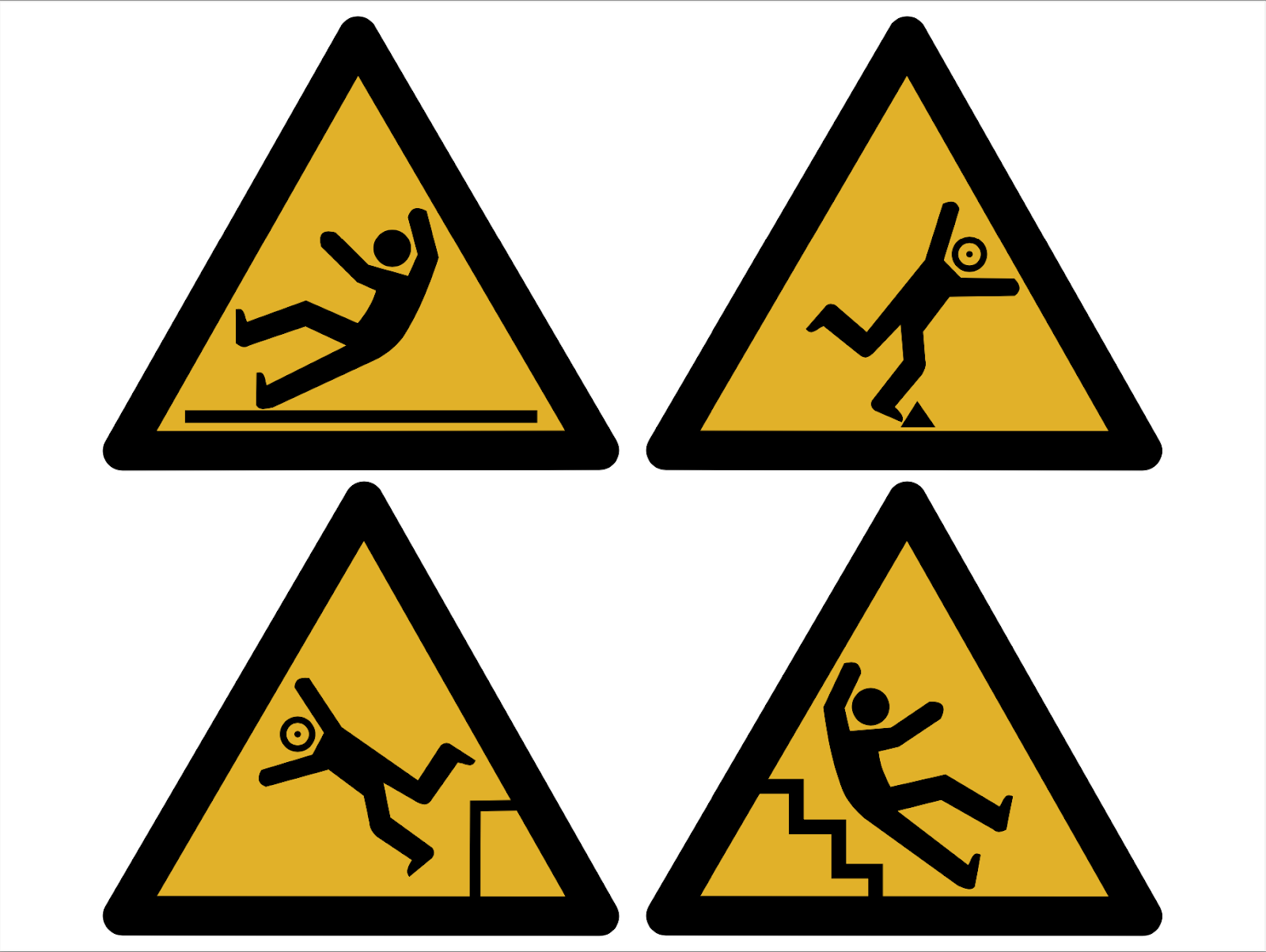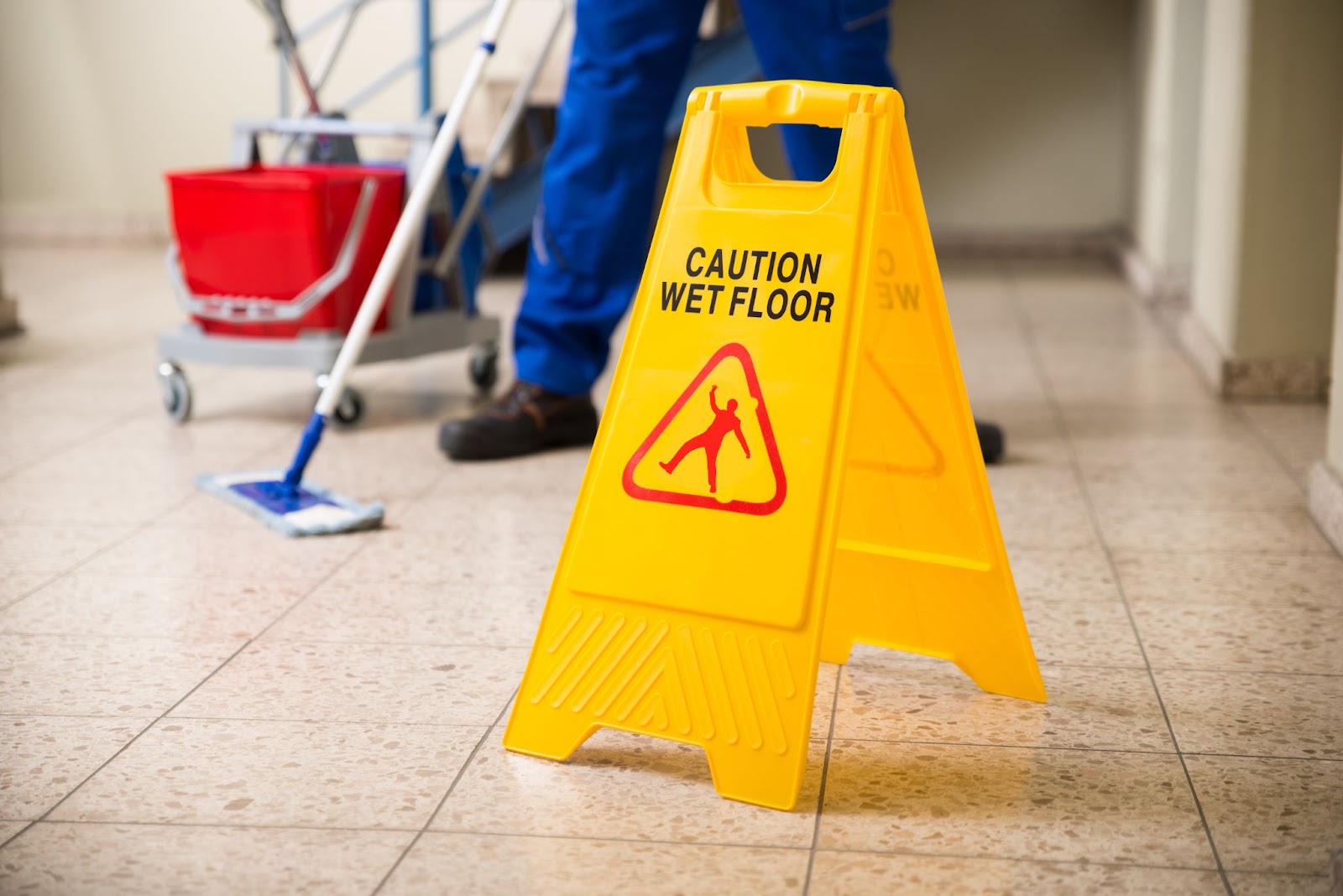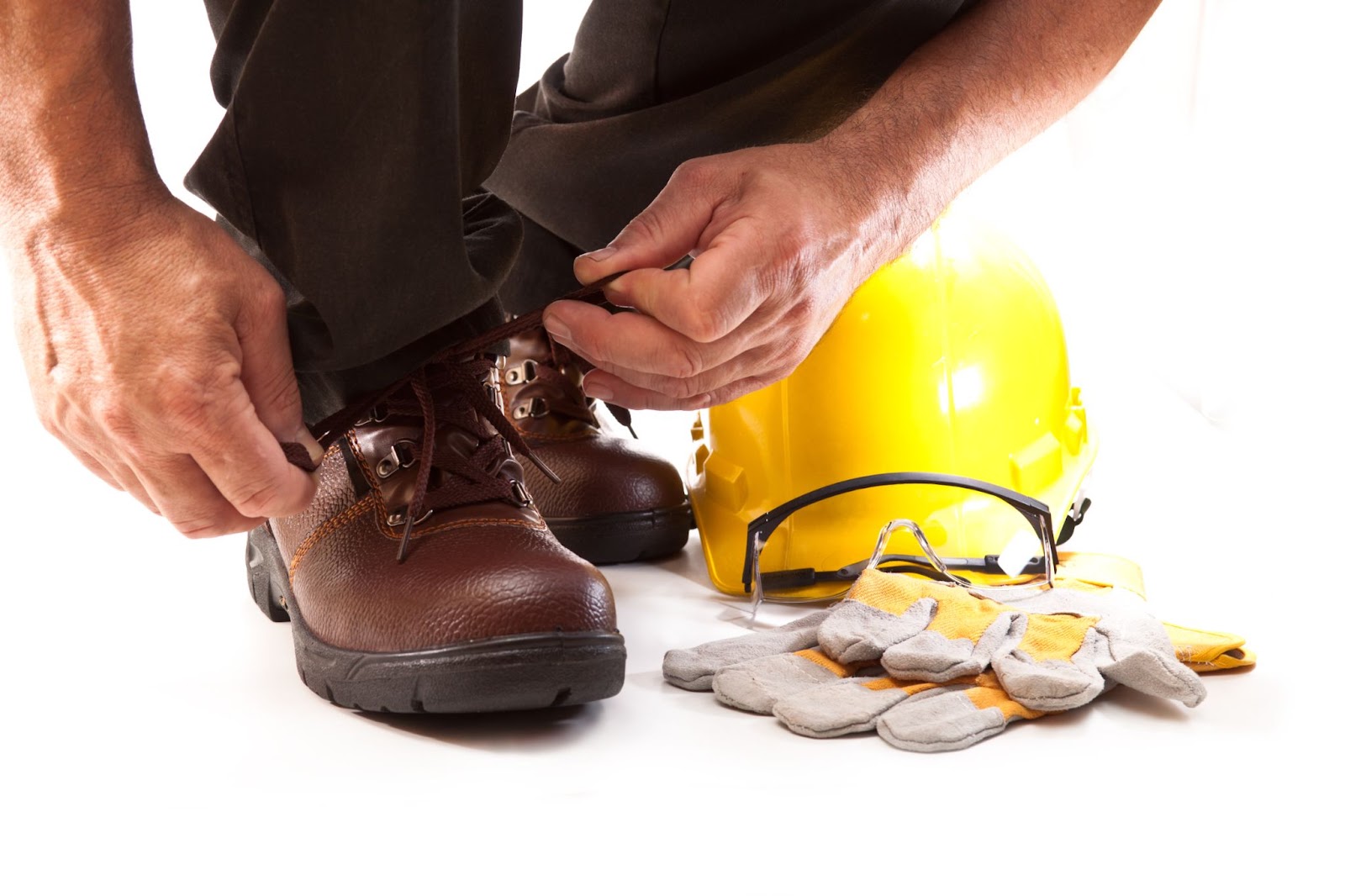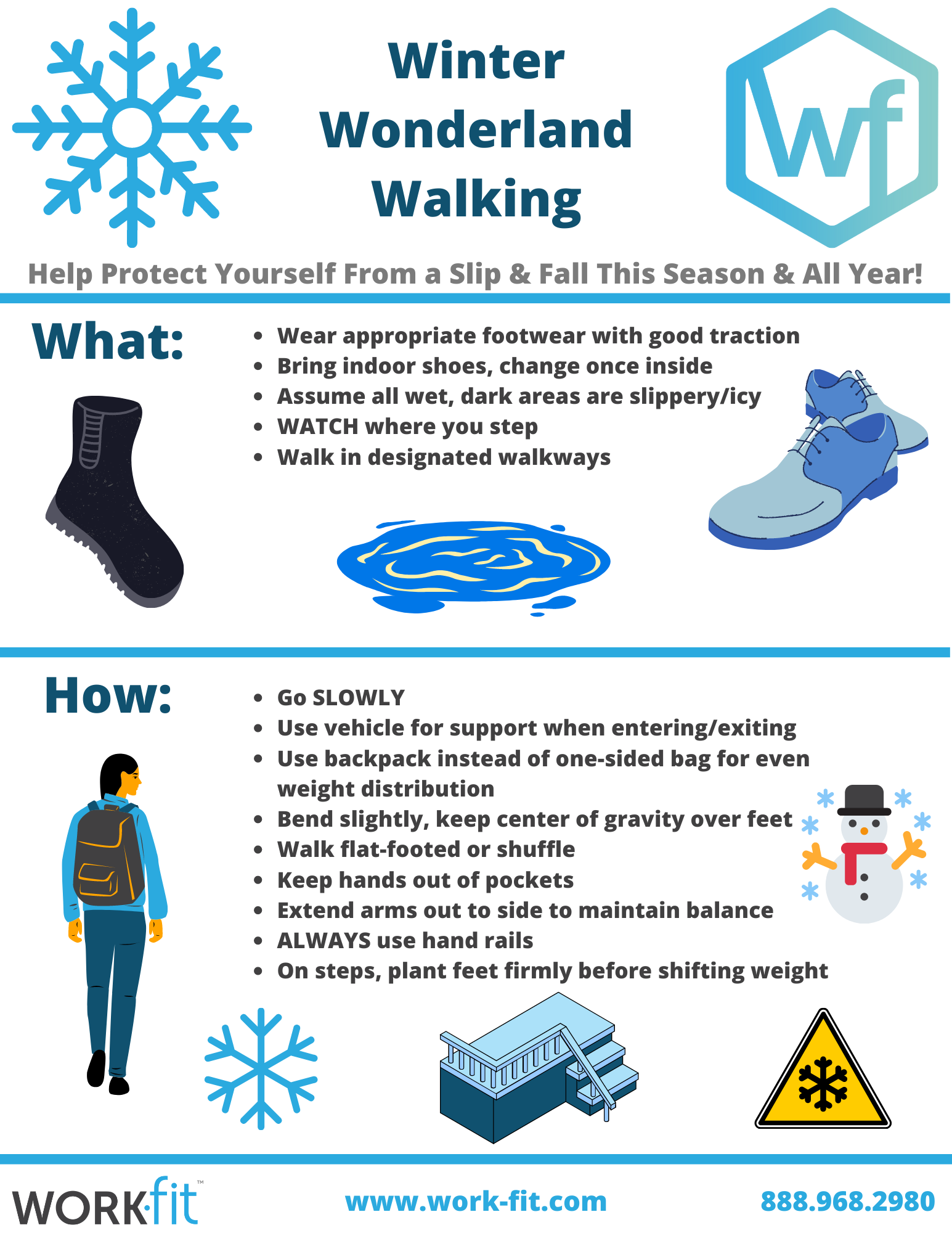5 Ways to Prevent Slips, Trips, & Falls in the Workplace

Few people can claim they’ve never slipped, tripped, or fallen at least once in their lives. It happens to everyone at home, school, work, and play. Sometimes it can get a laugh out of bystanders but in reality, these types of accidents are dangerous, especially when they happen at work.
It only takes a second of not paying attention to slip on a wet floor, fall down a flight of stairs, or trip over protruding objects. Injuries can range from bruises and minor sprains to more serious ones requiring medical attention.
The U.S. Department of Labor reports that injuries due to slips, trips, and falls are the second-highest cause of days away from work. To put it into a financial perspective, an estimated 25 percent of reported injury claims are filed after an employee trips, slips, or falls.
However, there are ways businesses can make the work environment a safer place for its employees. If you recently slipped or tripped and fell at work, Houston slip and fall lawyer Stewart J. Guss explains: “you typically must file a workers’ compensation claim to receive financial support. Many businesses have this no-fault insurance to protect their employees when accidents occur on the premises.”

How to Prevent Employee Injuries From Slips, Trips, & Falls
Employee injuries can be costly to a company. Here are five steps your business can take to minimize workers’ risks:
1. Create a Slips, Trips, and Falls Risk Assessment Plan
The first step is to understand that housekeeping and maintenance are an integral part of safety. Cleaning is the perfect opportunity to simultaneously conduct risk assessments, and both should be routine in your workplace, not something done right before an inspection or after an accident. An easy way to keep the business clean, organized, and risk-free is to create a plan.
- Assign specific responsibilities to individuals or teams. You also want to stress that each employee is responsible for picking up after him/herself.
- Once the duties are assigned and a routine has been written down, post the cleaning plan in an area that is easily accessible to employees.
It only takes a few steps to be proactive in workplace slip, trip, and fall prevention.

2. Keep Floors Clean and Dry
According to the National Floor Safety Institute (NFSI), 85% of worker’s compensation claims are attributed to employees slipping on slick floors. Floors get wet. Mopping and spills are just a couple examples of what can make a floor slick. To prevent slips and falls, always put out a “wet floor” sign after mopping and spills.
If outside water frequently seeps in, moisture-absorbent mats can keep floors dry. Another option is to lay down anti-skid adhesive tape. It provides additional traction on slippery surfaces. It works especially well on slight inclines often found in long hallways.
3. Remove Obstacles From Floors
Anything can be considered a trip hazard if it’s on the floor. Equipment, work materials, and everyday clutter can easily become obstacles on stairways, doorways, around corners, and on floors. To keep the workplace free of obstacles, it’s necessary to make it a policy to continuously check areas to ensure the floors, etc. are free from clutter.
Here are a few workplace storage safety tips:
- Keep service areas, storerooms, hallways, and workstations clean and clutter-free
- Do not leave hose, cables, wires, etc. laying across floors when not in use
- Avoid leaving briefcase, files, boxes, etc. laying in walkways
- Close all doors and drawers when not being used
- Footprint locations for movable racks, turntables, equipment, etc. to assure it is returned to the proper location each time
4. Maintain Adequate Lighting Throughout the Workplace
The risk of accidents from slips, trips, and falls at work increases when there isn’t adequate lighting. This includes all walkways, stairs, hallways, ramps, basements, and dock areas. If it is a construction site, every part must be well-lit at all times during work hours
It’s also important to remind employees to always turn on the lights first when they enter a dark room. This means you’ll want to make sure that all light switches are placed close to the door. Bulbs, cords, and light fixtures must also be repaired or replaced immediately when needed

5. Require Proper Footwear
Whether you work in an office, an automotive shop, or on construction sites, proper footwear is crucial to preventing slips, trips, and falls. Some industries require or even provide specialized footwear as part of the uniform code, but not all.
If safety shoes aren’t required, employees still need to consider their footwear. The soles should be non-slip, with plenty of traction. If heels are often worn, ensure that the shoes won’t get caught on the edge of a rug or other uneven surface. Employees also want to double-check to see if their shoelaces are tied.
Create a Custom Plan With Work-Fit
It is impossible to prevent every slip, trip, or fall at work. Accidents can happen anywhere, but by taking proactive safety steps, many workplace injuries can be prevented. One of the best ways to make sure your team is protected is to bring in the experts.
At Work-Fit, we use sports therapy techniques to create on-site and telehealth holistic wellness plans in the workplace – and we know safety risks when we see them. To conduct a slip, trip, and fall risk assessment, or to find out how else Work-Fit can improve your business by protecting your employees, contact our team today.
Share these winter walking tips with your team today!




